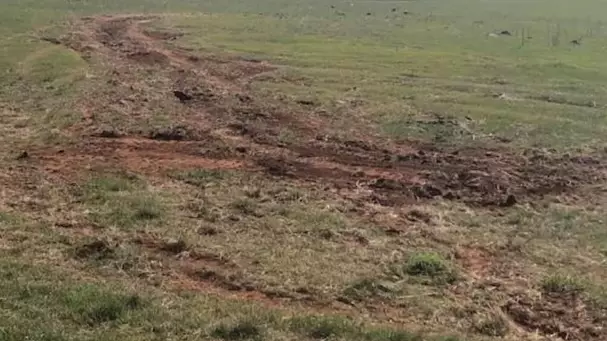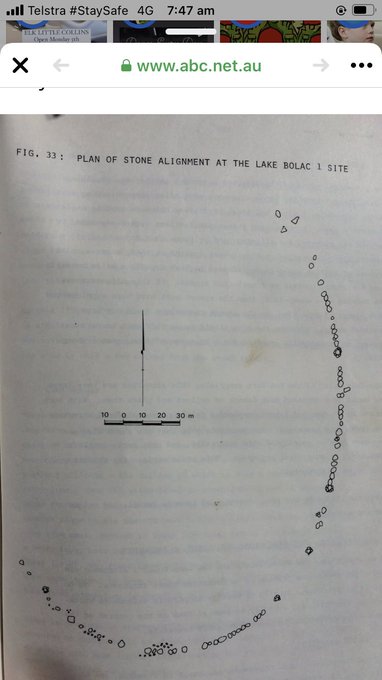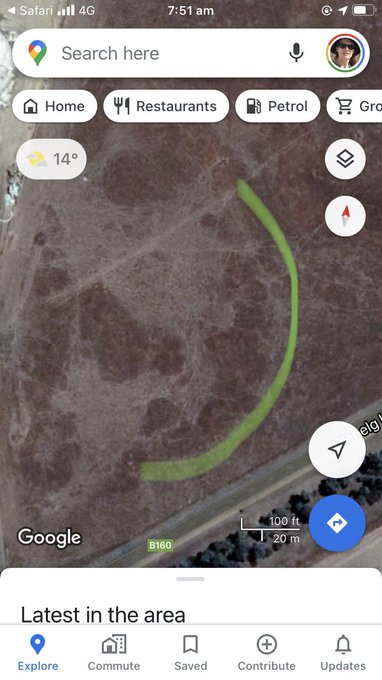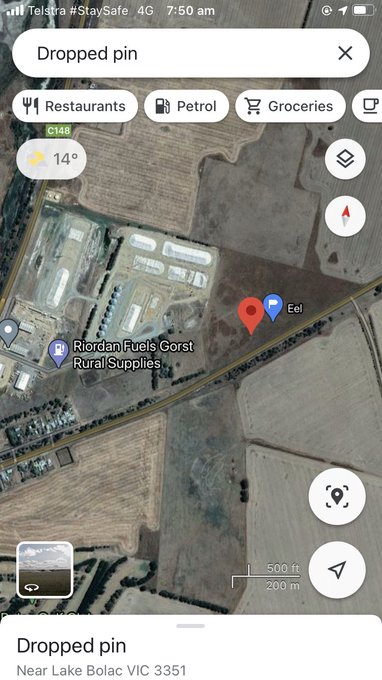
Traditional owners are 'devastated and traumatised' after a 1500-year-old heritage-listed site in western Victoria was partially destroyed.
The Kuyang Stone Arrangement north-west of Lake Bolac, in western Victoria was a 176-metre-long Aboriginal cultural landmark made up of two lines of stones depicting the life-cycle of an eel.
It was registered with state government agency Aboriginal Victoria under the Aboriginal Heritage Act.
Advert
Despite this, about 60 metres of the stone landmark was removed by the current landowner on Good Friday in order to 'clear a path for a boom spray to poison an infestation of thistles', The Age reported.
After hearing that the ancient arrangement had been tampered with, traditional owners of the land were shocked, angry and sad.
The landowner, Adrian McMaster, inherited the property from his father three years ago and insisted that the destruction was not deliberate, saying he had no idea the rocks were of cultural significance.
Advert
He then apologised for his mistake, declaring he would work with the Indigenous community to return the stones to their rightful place.
"We deeply regret the upset and the pain we have unconditionally caused to many people and we would welcome the assistance of the Eastern Maar Aboriginal Corporation in the restoration of these stones," he said.
He also told the ABC: "I made a huge mistake and I'm really sorry for upsetting a lot of people."
"It wasn't our intention."
Arrived home from Bourke and was shocked to find that the bottom half ( tail end) of the Kuyang (eel) stone alignment...
Eastern Maar Aboriginal Corporation cultural heritage adviser John Clarke said he was 'heartbroken' over the removal of the stones and had shed when he observed the damage to the ceremonial and cultural site.
Advert
He added that he would not meet with McMaster to discuss the incident, comparing the destruction to removing rocks from Stonehenge.
"There has to be a due process now," Clarke, a Kirrea-Whuurrung man, told The Age. "The Aboriginal community is really concerned about what has occurred. It's sad, traumatic, it certainly has a bearing upon members of our community.
"There are concerns there haven't been many prosecutions since the inception of the current act."
The Aboriginal Heritage Act states that knowingly causing damage to an Indigenous heritage site can see individual cop a massive $300,000 fine.
Advert
"There have only been four prosecutions and that, I think, with the amount of reports made to Aboriginal Victoria annually relating to possible harm [to indigenous sites], there is general concern amongst traditional owners that the number of prosecutions could be a little light on," Clarke said.
A spokesperson for Aboriginal Victoria said that they were aware of the incident and were working alongside the Eastern Maar Aboriginal Corporation as they investigate.
"It is an offence to cause harm to Aboriginal cultural heritage under the Aboriginal Heritage Act and substantial penalties can apply," the spokesperson said.
Local resident and musician Neil Murray said he was 'gutted' over the discovery.
Advert
"It's bare, there's just a graded track," Murray told the ABC. "In the distance, you can just see in the corner of the paddock that's where the stones have been dumped in the paddock.
"It makes you want to cry."
He added: "Aboriginal or non-Aboriginal, if you love this country in a deep way, it's automatic you have reverence and respect for the Indigenous heritage of this land."
Topics: Australia


